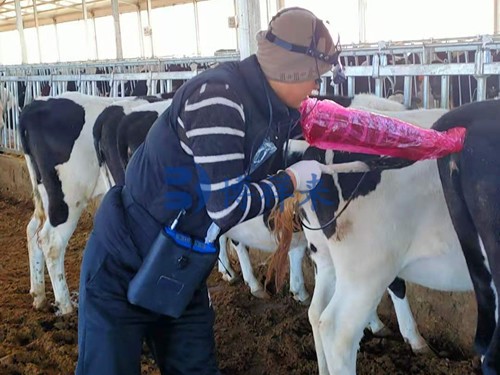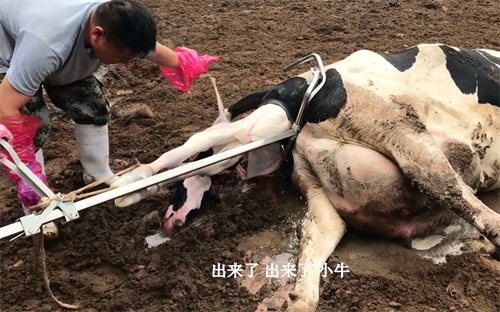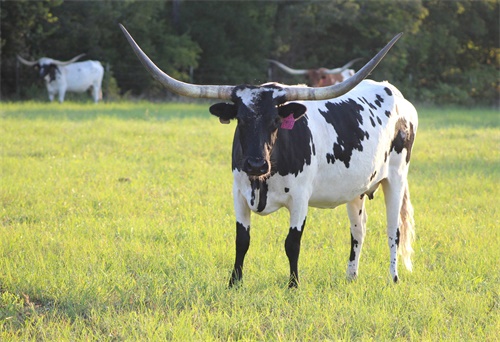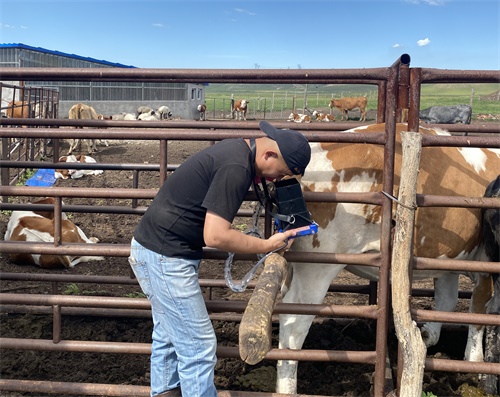As a dairy or beef producer, understanding the cow's reproductive cycle isn’t just helpful—it’s vital. Timing insemination correctly, detecting silent heat, identifying fertility issues, and planning embryo transfers all depend on accurate, real-time information. That’s where ultrasound imaging has completely changed the game.
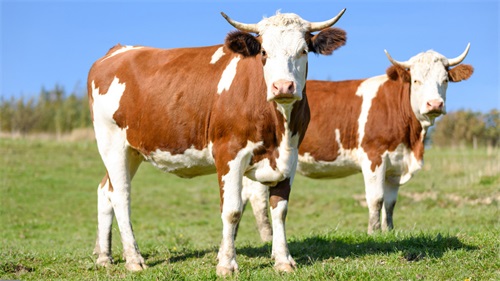
One of the most fascinating and practical uses of ultrasound in cattle reproduction is the ability to monitor follicular waves. While this may sound like advanced reproductive science, it’s become a hands-on management tool for farms worldwide.
What Are Follicular Waves and Why Do They Matter?
A cow’s estrous cycle is driven by the growth and regression of ovarian follicles. These waves of follicular development are not random; they occur in predictable patterns throughout the cycle. Depending on the individual cow, most cycles consist of either two or three follicular waves, with each wave producing a dominant follicle that may or may not lead to ovulation.
Here’s the key: if you can track these waves, you can pinpoint the optimal time for breeding or intervention.
Follicular waves impact:
-
When ovulation will occur
-
Whether a dominant follicle is growing or regressing
-
The hormonal environment of the cow
-
Fertility outcomes after insemination
Monitoring these patterns with transrectal ultrasound gives farmers and vets a level of precision that’s impossible to achieve with observation alone.
How Farms Actually Track Follicular Waves with Ultrasound
Let’s get practical. On most farms using this technique, a real-time B-mode ultrasound scanner is used with a linear rectal probe. It’s safe, non-invasive, and relatively quick once you’re trained.
A typical scan reveals:
-
Size and number of follicles on each ovary
-
Presence of a dominant follicle or corpus luteum (CL)
-
Whether the cow is pre-ovulatory, mid-cycle, or in a transitional stage
-
Signs of abnormalities like persistent follicles, cysts, or anovulatory cycles
With this information, you’re not guessing whether the cow is “in heat.” You know where she is in the cycle with accuracy that rivals blood hormone tests—but without the wait.
Real Benefits Seen on Working Farms
On farms that incorporate regular follicular monitoring, the benefits stack up quickly. Here's what producers and vets across North America, Europe, and Australia have reported:
1. Improved Insemination Timing
Missing a heat cycle can cost hundreds of dollars in lost productivity. Ultrasound shows when the dominant follicle is ready to ovulate—usually when it reaches around 12–20 mm in diameter. This leads to more pregnancies per insemination and fewer open days.
2. Early Detection of Reproductive Problems
Follicular cysts, luteal insufficiency, or irregular wave patterns can go unnoticed until it’s too late. Ultrasound reveals them early so treatment can start sooner, improving outcomes.
3. Better Estrus Synchronization Programs
Synchronization relies on knowing what the ovaries are doing. Is the CL responding to prostaglandin? Is the dominant follicle growing or regressing? Scanning confirms the protocol is working—or alerts you when it’s not.
4. Strategic Embryo Transfer Scheduling
ET programs require perfectly timed ovulation. By mapping follicular waves, you can predict ovulation within hours, ensuring better embryo survival and pregnancy rates.
The Science Behind the Practice
Cows typically exhibit two or three follicular waves per estrous cycle, which lasts about 21 days. Each wave consists of:
-
Recruitment: Several small follicles (4–6 mm) start to grow
-
Selection: One follicle becomes dominant
-
Dominance: The dominant follicle continues growing (12–20 mm)
-
Atresia or Ovulation: It either regresses or ovulates, depending on hormonal signals
The presence or absence of a corpus luteum also matters. A strong CL suggests that ovulation has occurred recently, and the cow is in diestrus. Weak or absent CLs could mean the cycle is disrupted.
On-farm ultrasound lets us visualize all of this in real-time. It’s not just about looking at the uterus anymore—it’s about reading the ovary like a biological clock.
Equipment That Makes This Possible
Today’s farm ultrasound machines are portable, rugged, and designed with livestock in mind. Key features include:
-
B-mode real-time imaging for clear views of follicles
-
Rectal linear probes designed for internal cow exams
-
Waterproof and dustproof casings to handle barn environments
-
Long battery life, which matters when scanning dozens of cows in a row
Brands like BXL, Ibex, and Draminski offer veterinary-focused models with presets tailored for reproductive work. Some systems even allow image storage or video loops, which can be reviewed later or sent to off-site consultants.
Common Questions from Farmers and Techs
Can ultrasound completely replace heat detection?
Not necessarily. It complements heat detection. In fact, many farms use both—visual observation plus ultrasound confirmation—for maximum accuracy.
How often do I need to scan a cow to monitor follicular waves?
Ideally every 2–3 days during a monitoring cycle. That’s enough to track dominant follicle progression without causing stress.
Can I learn to scan myself?
Yes. Many farmers and technicians are trained through veterinary courses, online modules, or directly by ultrasound manufacturers. It takes practice but isn’t overly complicated.
Case Study: Wisconsin Dairy Farm Boosts Conception Rate
A mid-sized dairy in Wisconsin began tracking follicular waves in their high-value cows using ultrasound. After three months, their first-service conception rate jumped from 39% to 55%. They attributed the change to better timing, fewer missed heats, and identifying cows with cystic ovaries early.
They also found that heifers with three-wave cycles responded better to synchronization than two-wave cows—information they never had before ultrasound.
It’s Not Just for Repro Vets Anymore
For years, follicular monitoring was something you read about in research papers or left to large embryo transfer programs. Now, it’s becoming part of daily farm management, just like pregnancy checks or BCS scoring.
Producers in Australia use follicular mapping to schedule AI without hormone protocols. In Canada, some herds use follicular size and luteal status to decide when to cull poor breeders. Across the U.S., progressive dairies use ultrasound to reduce hormone use, shorten calving intervals, and cut veterinary costs.
Final Thoughts
Follicular wave monitoring with ultrasound isn’t some futuristic tech—it’s happening now on farms around the world. It helps answer key questions: Is she ready to breed? Is her cycle normal? Will this protocol work?
Most importantly, it puts reproductive control back in the hands of farmers and herd managers, reducing guesswork and improving results. Whether you’re managing 30 cows or 3,000, this tool can make your reproduction program more efficient, data-driven, and profitable.

